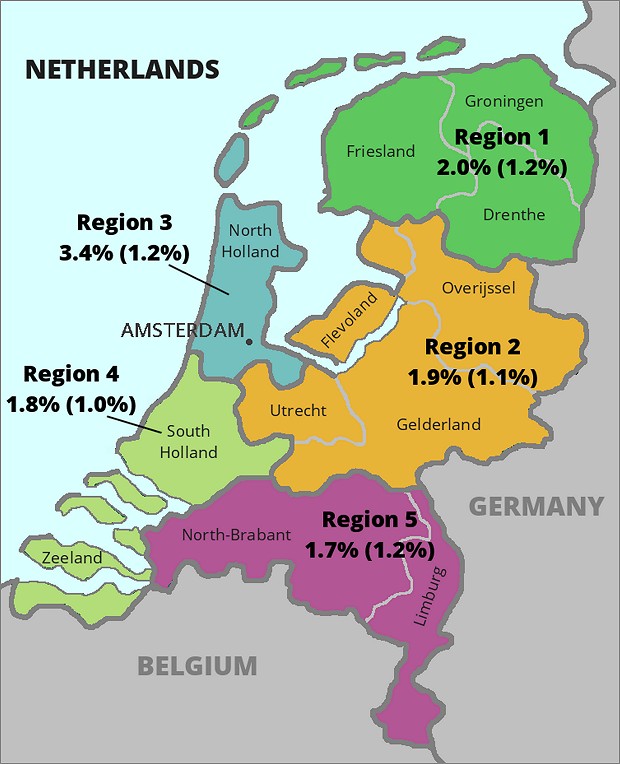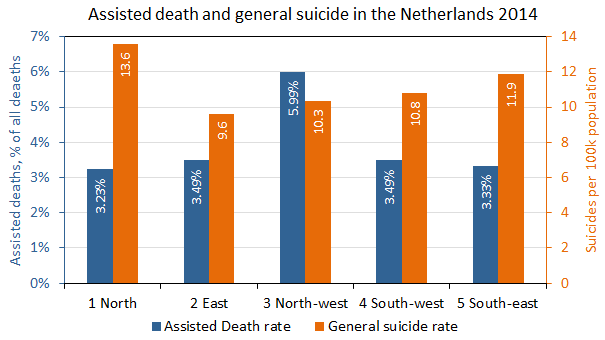More evidence bursts Margaret Somerville's 'suicide contagion' bubble

I’ve previously published an extensive analysis of how Professor Margaret Somerville, of the Catholic Notre Dame University of Australia, cherry-picked her way through select data that seemed to be (but wasn’t) consistent with her ‘contagion’ theory from assisted dying to the general suicide rate. I provided ample evidence from lawful jurisdictions that comprehensively contradicts her claim. I also published the summary in ABC Religion & Ethics.
Yet Somerville still says despite extensive real-world experience to the contrary, that “I believe that my [suicide contagion] statement will prove to be correct.”
She and her Catholic colleagues still hold onto several tenuous threads of information that might — just might — appear consistent with her theory, despite the truckloads of evidence to the contrary.
One of those tenuous threads is that the general suicide rate in the Netherlands has increased from 2008, around the same time that use of the Dutch euthanasia law also increased. (The general suicide rate previously fell as assisted dying rates increased.)
I reported official Dutch government statistics and expert financial reports to show that the unemployment rate explains most (80%) of the variation in the Dutch general suicide rate since 1960, and that the Netherlands was particularly hard-hit by the global financial crisis from 2008 — whereas neighbouring Belgium wasn’t and its suicide rate dropped as assisted dying numbers increased. Unemployment in hard times is a known significant risk factor for suicide.
Now, a detailed and peer-reviewed analysis of Dutch data recently published in the Netherlands Journal of Medicine throws more mud in the face of Somerville’s theory.1
The research looked at the Dutch assisted death and general suicide rates from 2002 through 2014, separately for each of the five Euthanasia Commission reporting regions.
Headline results of the averages for 2002–14 are shown in Figure 1.
 Figure 1: The average assisted death rate (and suicide rate) as a percent of all deaths by region, 2002-14
Figure 1: The average assisted death rate (and suicide rate) as a percent of all deaths by region, 2002-14
Source: Koopman & Putter 2016
As you can see, Region 3, which includes Amsterdam, had by far the greatest assisted death rate (3.4%), compared with the other four regions (1.7% – 2.0%). Yet Region 3’s suicide rate at 1.2% was the same as Region 5 which had only half the assisted death rate of Region 3 (1.7% vs 3.4%). (The authors, unusually, expressed suicides as a percentage of all deaths rather than per 100k population.)
The results are the opposite of Somerville’s theory which says that Region 3’s general suicide rate should be much higher than (not the same as) Region 5’s.
Those figures are the average for 2002–14. It’s possible that the picture is a little different for the more recent years in which the assisted dying rate is higher.
To answer that question, I’ve retrieved official Dutch Government data and calculated the assisted dying rates and general suicide rates for 2014 alone, the most recent year for which all the data is available. I’ve also calculated the general suicide rate per 100,000 population, the more usual way of reporting and comparing suicide statistics. The results are shown in Figure 2.
While region 1 (the far north) has the lowest assisted death rate (3.2% of all deaths), it has by far the highest general suicide rate (13.6 per 100k population).
The latest Dutch regional data shows the opposite of Margaret Somerville’s ‘suicide contagion’ theory, adding to the already extensive evidence against it.Conversely, region 3 (which includes Amsterdam) has by a very large factor the highest assisted dying rate (6.0% of all deaths), yet it has the second-lowest general suicide rate (10.3 per 100k population).
This latest empirical evidence is consistent with other extensive evidence I’ve published showing an inverse — or no — relationship between assisted dying rates and general suicide rates.
The question is whether Margaret Somerville and her Catholic friends will pay the slightest attention, or continue to rely on invalid, cherry-picked morsels of data that they think support their theory, but don’t.
References
- Koopman, JJE & Putter, H 2016, 'Regional variation in the practice of euthanasia and physician-assisted suicide in the Netherlands', Netherlands Journal of Medicine, 74(9), pp. 387-394.

 Figure 2: The Dutch assisted death rate and general suicide rate by region for 2014
Figure 2: The Dutch assisted death rate and general suicide rate by region for 2014